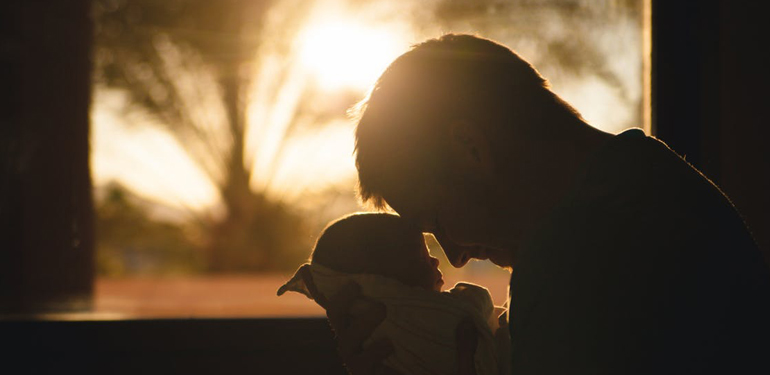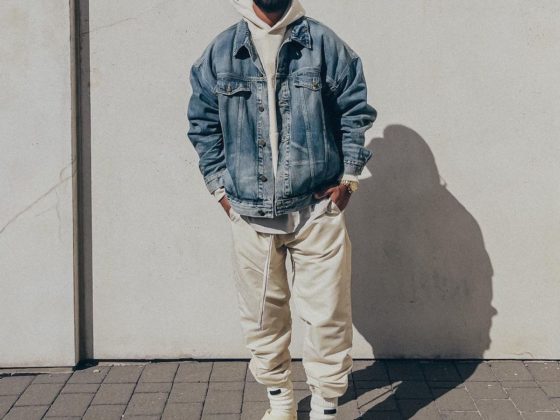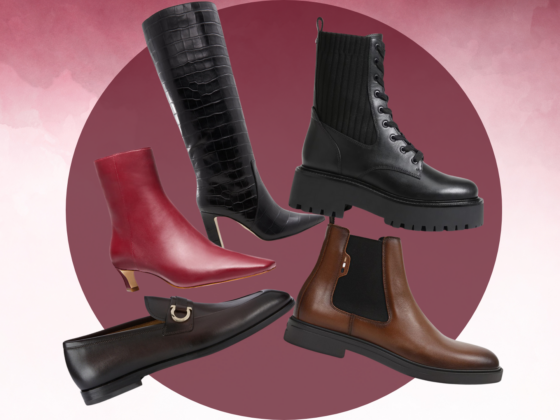
In the not-too-distant past, dads who tried to do anything traditionally reserved for women (i.e. in the Leave it to Beaver days) – like cook, change a diaper or dress a child – were often made a mockery of and portrayed as the inept parent. This was perpetuated in movies like Three Men and a Baby (for those of us old enough to remember), Mrs. Doubtfire and Daddy Day Care.
Well, times have changed. Not only is the modern dad usually as savvy in the kitchen as his wife and a pro at diaper-changing, he often has the option of paternity leave and could be a member of a “dad group.” Many men are even opting to turn traditional gender roles on their head and become stay-at-home dads (SAHD) while their wives pound the pavement, winning that bread for the family.
The proof is in the growing number of stroller-pushing dads in the playgrounds and grocery stores on a weekday morning, but also in the stats. According to Statistics Canada, in 1976, stay-at-home fathers accounted for approximately 1 in 70 of all Canadian families with a stay-at-home parent. By 2015, that figure had risen to 1 in 10.
ADVERTISEMENT |
Craig Ono was a senior partner at a small advertising agency before he left the partnership to become a SAHD to his now 9-year-old daughter. Previously, his wife Laura was a VP at a PR agency and the plan was for her to become the breadwinner. When she was laid off after her pregnancy with their daughter, she started a music studio in the Beaches, which she still runs.
“I’ve always wanted to be a SAHD. When we decided to start a family we didn’t want our child to spend the majority of her day in daycare as we believed the most important years of a child’s development are in the first five years,” says Ono. “I also think that my siblings and I were not very close to our father and I didn’t want to have the same type of relationship with our daughter.”

Corey Thomas was a professional accountant working in the CPG industry, holding successful positions in finance and marketing when he decided to trade the suits for the diapers after struggling with the options for care of their two children. “More importantly than the lack of childcare, being a father meant so much to me,” said Thomas. “I have always wanted to have children, and love raising strong, respectful kids that will have the foundation to be successful at whatever they apply themselves to.”
Thomas became a SAHD when his kids were in senior kindergarten and two years old – they’re now three and seven. “I think the biggest takeaway is how influential of an age this is; our kids are growing and learning so much – it’s incredible,” says Thomas. “Having the advantage of being so involved allows me to better understand their strength and comfort areas, not only in school, but also athletics, social situations and with respect to general core values important to our family. On the challenge areas, it allows me to work with other key players in the children’s lives, specifically teachers.”
ADVERTISEMENT |
Some dads – like Derek Ewen, a restaurateur who spends his time between Estonia and Toronto – decided to become SAHD later in the game when his youngest was born four years ago (he has two teenaged daughters). “I see now with my son that I missed precious moments with our daughters when my business was growing quicker than I had thought at the time – and that hurts,” says Ewen (although he does cite being the only dad taking his daughter to ballet when she was just two).
Those with flexible or seasonal careers, like carpenter Ben Birnie, are also opting to take long periods of time off work to bond with their offspring. Birnie decided to take time off this past December to March, when his son Kieran was 10 months old. “Generally, the slow months for construction are in the winter, and as my partner had been taking care of our little one since the previous spring, it was a nice change to be able to stay home while she focused on her work/career.”

Like the others I spoke with, he says that the rewards were incredible. “The best part of being home was the bonding experience with our son,” says Birnie. “At that point, he didn’t do much other than babble, eat, sleep and poop. But, we babbled a lot together, played with toys and went for walks and coffee (weather permitting) – just kind of two besties hanging out. The naps were nice too.”
For those with less flexible jobs, thankfully, paternity leave has become a reality for a growing number of fathers. Companies like Virgin and Netflix even offer the option of paid paternity leave for up to a year after a child is born or adopted. In Canada, new parents can split up to 35 weeks of leave between them, in addition to the up to 15 weeks biological moms can take on their own.
Adrian Kupesic is the Director of Public Affairs for an industry association and took paternity leave with his first child in 2011 (his second was born in 2016) when he was in government, working for an Ontario Cabinet Minister. “Working in what can be a very gruelling environment (politics) takes you away from being there. In fact, my first-born was born during the 2011 election,” says Kupesic. “I didn’t get to see her as much as I would have liked over her first month of being with us and it weighed on me quite a bit. So, I jumped on the chance when I realized I could take paternity to spend more time getting to know her and to bond with her.”
ADVERTISEMENT |

Being a SAHD – even if temporarily while on paternity leave – is not always without accompanying stigmas. A 2013 Pew Survey found 51 percent of respondents said that children are better off if their mother is at home without a job, compared to just 8 percent who said the same of fathers without paid employment (I’d like to think we’ve opened our thinking in the years since, thanks to the impossible-to-ignore discussions of shifting gender roles).
While some – like Birnie and Kupesic – didn’t report facing any stigmas (“maybe a few raised eyebrows, but that’s it,” says Kupesic), others did. Some people I reached out to even declined to participate thanks to the lingering stigma.
“I don’t experience any negativity now, but when our daughter was a baby I would experience some negativity. Many times when out with our daughter, people would say to me, ‘oh how nice to give mommy a break and take the baby out for a day,’ says Ono. “It would always be a woman who would make these types of comments to me. Men – my buddies – would mostly be envious of my situation and wished they could be a SAHD (whether they were genuine with their comment, I don’t know).” He recalls having to change his daughter’s diaper on a restaurant table back in the day when diaper change tables were only a reality in women’s bathrooms.
ADVERTISEMENT |
“The only other thing that bothers me are the infographics on the lives of stay-at-home moms; they should not be so gender-specific as SAHDs have the exact same issues as moms,” says Ono. “I’ll often comment on friends’ Facebook pages when they post or share an infographic about how hard it is to be a stay-at-home mom.”
Thomas experienced less-than-positive feedback from a professional standpoint on how it would affect his career, along with the odd jab. “I did experience some negativity from buddies and acquaintances – jokes and comments – about staying at home and not ‘working,’” he says. “But at the beginning of the journey, I got some good advice: ‘put yourself out there; you’re going to be the only male in a lot of your situations and there will be many groups already formed.’” Thankfully, there is now no shortage of stay-at-home dad meet-ups throughout Toronto.

Of course, the sky-high Toronto real estate prices make the option of a single income a pipe dream for most families. The good news is that the growing freelance economy makes it easier than ever to still work on the side, even if it isn’t within the Monday-Friday, 9-5 confines. When he’s not on daddy duty, Ono works from home as a graphic/web designer and Ewen often consults restaurants.
ADVERTISEMENT |
Not just naps, park time and sharing gummy fruit snacks, being a SAHD isn’t without its challenges. “As a family, we constantly have to balance the sacrifices we are making with all the benefits there are of me being at home,” says Thomas. “I have a constant inner reminder of how amazing this time is and my wife and I discuss our family budget more frequently as well.”
“Of course, it’s a big financial hit to be a stay-at-home dad; you have to make many sacrifices, the least of which being your personal time, but it’s so worth it,” says Ewen. “It also highlights how hard to have to work at your relationship, as it can often also take a hit.” In terms of relationships, many SATDs said it helps to appreciate what their wives are dealing with.
“My biggest takeaway is just how well it set me up for success as a parent,” says Kupesic. “Having the opportunity to spend my days with my daughter taught me how to be a better dad and how to cope when I am called upon to be more involved (yes – I guess I still take my wife for granted). It was so rewarding and something I am proud to have done.”
ADVERTISEMENT |
RELATED LINK: 5 Things I Wish I Had Known Before Becoming a Mom
Why do you think there is still a stigma attached to being a stay-at-home dad? Share your thoughts with us in the comment section or tweet us at @ViewtheVibe.






